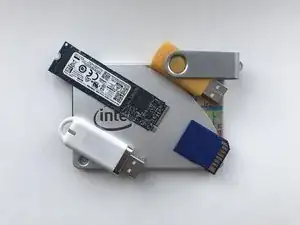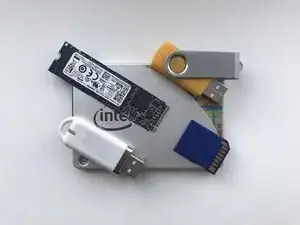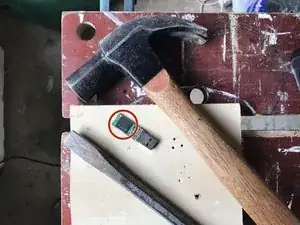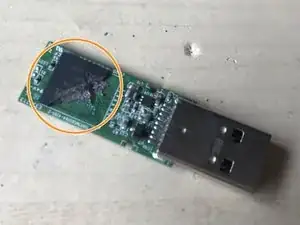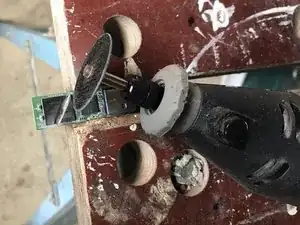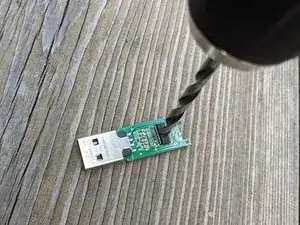Introduction
Data destruction on hard drives is comparatively easy, either by overwriting (though this may take a long time) or more securely by physical destruction. However, with solid state disks (SSDs) and memory sticks, physical destruction is the only safe method.
Unlike a hard disk, an SSD cannot overwrite data without first erasing any previously written data - a comparitively slow process which can only be applied to quite large blocks of memory at a time. So to achieve an acceptable speed, new data is written to a fresh data block, the SSD controller keeping an index of where it has stored what data. The old data remains until the SSD has determined that none of the data in the data block (perhaps parts of several different files) is still required. Only then is the entire block erased and released for reuse.
As a result, old copies of data are likely to persist in memory cells that you can’t directly access, except with forensic tools. At some time this old data will be cleared and the memory cells made available for reuse, though heavily used and no longer reliable data blocks will eventually be permanently retired and never cleared.
You can use the ATA Secure Erase command (implemented by the freeware Secure Erase utility) to securely erase data on an SSD. This tells the SSD to erase all the data on the drive, including any data that may be hidden or inaccessible, such as in retired blocks. However, there have been suggestions from government security agencies that ATA Secure Erase is not properly implemeted on all hard disks and SSDs, and there's no easy way to tell.
The smart thing to do is to enable encryption before you write any sensitive data, then all you have to do is change the key to something totally random and destroy any record of it, and no one will be able to recover your data. On Windows, you can use Bitlocker, or FileVault on Macs. You can use either of those on memory sticks, or Veracrypt, which also works on Linux. You should always encrypt your memory sticks as they are so easily lost.
If you were looking to destroy data on a HDD, take a look at my companion guide here How to safely and securely destroy hard disk data
Tools
-
-
The first step is to open the device in order to expose the storage chips.
-
In the case of an SSD, if you're lucky you may only have to remove the screws holding the lid on (ignoring warnings about voiding the warranty). Otherwise, and for other devices, look for any crack between two halves of the case which might give you a weak point you can work on. You may need a hammer or a dremel with a cutting disk.
-
When you get inside you will see a circuit board with components on one or both sides. The largest of these will be the memory chips, and may be mounted on both sides of the board. There will be one or more similar looking but smaller controller chips which you probably don't need to worry about.
-
-
-
With the device on a firm surface, place the tip of the cold chisel across the middle of the memory chip and strike the cold chisel firmly with the hammer.
-
The chip should split neatly in two. Half of it is likely to take flight - make sure there are no children around with their eyes at a similar level to the chip.
-
Repeat for all other memory chips on both sides of the board.
-
-
-
If you had to use a dremel to open the device you can use this as an alternative to the hammer and cold chisel.
-
With a cutting disk, grind through each memory chip until you can see the circuit board underneath.
-
-
-
If you don't have a cold chisel or a dremel you can also drill through the memory chips, preferably using a pillar drill or drill press.
-
Place the device on a surface you don't mind drilling through, like a wooden plank.
-
Drill through the memory chip. Since silicon is hard and brittle, the chip may crack rather than yielding to the drill. Nevertheless, your job is done!
-
To reassemble your device - err, forget about it!
But please dispose of the remains of your day’s work responsibly, in a manner appropriate for electronic waste.
Take your e-waste to an R2 or e-Stewards certified recycler.
3 comments
What if you preserved the file but wrote other stuff to it? I mean, if it's a spreadsheet, change all the numbers to zeros. Does the "Save" operation write back to the original file-location on the SSD, or does the "wear-leveling" write the saving file to somewhere else?
Oh yes - you missed an even more guaranteed method of data-destruction: fire. It's a shame I can't add pictures to my comment - I could show my blowtorch reducing the SSD to powder. No fragments of chip remain (a really determined expert might scan the semiconductor matrix to retrieve patterns of 1s and 0s to reconstruct partial file components!😂)
If you change just 1 bit in a file on an SSD it will rewrite it to a different block. SSDs only allow you to do 2 things: clear a whole block to zeros, and write ones. You can't write zeros individually and hence you can't overwrite data like you can on magnetic media.
Burning will certainly defeat any adversary you're likely to meet (unless, perhaps, you're James Bond). But beware of noxious fumes - burning electronics is not generally considered a good idea. And in fact, the melting point of silicon is 1414C so the chips will probably survive intact. They briefly survive 350C during soldering but I don't know how much higher you have to go to cause the electrostatic charges storing the data to be lost. That uncertainty would probably cause James Bond to favour the dremel.
Another possible method would be to microwave it. It's extremely unlikely that a chip would survive the very intense electric fields. But your microwave probably wouldn't smell too sweet afterwards. Again, the uncertainty as to whether a chip could conceivably survive would favour the dremel for our friend Mr Bond.
